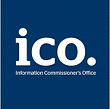Traumatic Brain Injury and Concussion
Traumatic brain injury (TBI) encompasses a broader spectrum of head injuries, ranging from mild to severe. Severe TBIs involve significant brain damage and often result in long-term disabilities, whereas mild TBIs, such as concussions, may involve temporary dysfunction but typically do not cause structural damage visible on imaging studies.
Fortunately, the vast majority of injuries are mild, typically causing transient, self-limiting symptoms and no long-term sequelae. However, approximately 20% of people report persistent symptoms at 3 months post-injury following mild TBI (mTBI). For these people, the long-term outlook is poor, with many experiencing ongoing negative impact on work and social function.
Some of the common reasons for mTBI include:
-
Sports Injuries: Concussions frequently occur during sports activities, particularly contact sports such as football, soccer, rugby, hockey, and boxing. High-impact collisions, falls, or blows to the head during these activities can result in mild brain injuries.
-
Motor Vehicle Accidents: Traffic accidents, including car crashes, motorcycle accidents, bicycle accidents, and pedestrian accidents, are significant causes of mTBI. Even relatively minor collisions can result in head injuries due to rapid acceleration or deceleration forces.
-
Falls: Falls are a leading cause of head injuries, especially among young children and older adults. Falls from heights, falls down stairs, slipping and falling on slippery surfaces, and falls while engaging in recreational activities can all lead to concussions.
-
Assaults: Intentional acts of violence, including physical assaults, fights, and assaults with weapons, can result in mild traumatic brain injuries. Blows to the head from punches, kicks, or objects can cause concussions and other head injuries.
-
Recreational Activities: Recreational activities such as skiing, snowboarding, skateboarding, and horseback riding carry a risk of head injury, particularly when safety precautions are not followed or accidents occur at high speeds.
-
Workplace Injuries: Occupational hazards in certain industries, such as construction, manufacturing, and transportation, can lead to head injuries. Falls from heights, being struck by falling objects, and accidents involving heavy machinery are examples of workplace incidents that can result in mTBIs.
-
Blast Injuries: Military personnel and individuals working in certain occupations, such as mining or demolition, may be at risk of blast-related injuries, including concussions, due to exposure to explosions or blasts.
-
Domestic Incidents: Accidents within the home, such as falls, collisions, or being struck by objects, can also cause mild traumatic brain injuries. Children and older adults are particularly vulnerable to head injuries in domestic settings.
It's important to recognise that even seemingly minor head injuries can result in concussions and should be taken seriously. Seeking prompt medical attention following a head injury is crucial for proper evaluation, diagnosis, and management to prevent complications and promote recovery. Additionally, taking preventive measures, such as wearing helmets during sports and recreational activities and practicing safety precautions in various settings, can help reduce the risk of mild traumatic brain injuries.
Persistence of psychological and cognitive symptoms
One of the challenges associated with mTBI and TBI is the persistence of psychological and cognitive symptoms, which can significantly impact an individual's daily functioning and quality of life.
Common psychological symptoms may include:
- Persistent headaches
- Memory problems
- Difficulty concentrating
- Irritability or mood swings
- Anxiety or depression
- Fatigue or sleep disturbances
Cognitive symptoms may manifest as:
- Slowed thinking
- Impaired judgment or decision-making
- Difficulty processing information
- Problems with organization or planning
Neuropsychological assessment
Following a TBI or mTBI, individuals may undergo neuropsychological assessment to evaluate the cognitive, emotional, and behavioral consequences of the injury. Neuropsychological testing is a comprehensive evaluation conducted by a trained professional to assess various cognitive functions, such as attention, memory, executive functioning, language, and visuospatial abilities.
The primary goals of neuropsychological assessment include:
-
Identifying Cognitive Deficits: Neuropsychological testing helps identify specific cognitive impairments resulting from the TBI, such as difficulties with memory, attention, processing speed, and problem-solving.
-
Treatment Planning: The results of the assessment guide treatment planning by providing valuable information about the individual's cognitive strengths and weaknesses. This information helps tailor rehabilitation interventions to address specific areas of impairment and maximise functional independence.
-
Monitoring Recovery: Neuropsychological assessment allows for tracking changes in cognitive function over time, providing insights into the trajectory of recovery and the effectiveness of interventions.
-
Documenting Functional Impairments: The assessment also serves to document cognitive and functional impairments, which may be necessary for legal or insurance purposes, as well as for establishing eligibility for disability benefits or rehabilitation services.
Components of Neuropsychological Assessment
-
Clinical Interview: The practitioner conducts a comprehensive clinical interview to gather information about the individual's medical history, TBI-related symptoms, cognitive complaints, psychiatric history, and functional status.
-
Standardised Testing: The individual undergoes a battery of standardized neuropsychological tests designed to assess various cognitive domains. These tests are selected based on the individual's specific symptoms and clinical presentation.
-
Behavioral Observations: The pratitioner observes the individual's behavior and interactions during testing to assess aspects such as attention, motivation, effort, and emotional functioning.
-
Collateral Information: Collateral information from family members, caregivers, or other relevant sources may be obtained to provide additional insight into the individual's cognitive and functional abilities, as well as their pre-injury functioning.
Interpreting Results and Treatment Recommendations
After completing the assessment, the practitioner analyses the test results in conjunction with the clinical interview and collateral information to formulate diagnostic impressions and treatment recommendations. These recommendations may include:
- Cognitive rehabilitation strategies to improve specific cognitive skills.
- Psychollogical therapy to address emotional and behavioral difficulties.
- Pharmacological interventions for symptom management.
- Recommendations for accommodations or modifications in educational or vocational settings.
- Referrals to other healthcare professionals or rehabilitation services as needed.
Conclusion
Neuropsychological assessment plays a critical role in the comprehensive evaluation and management of individuals following a traumatic brain injury. By identifying cognitive deficits, guiding treatment planning, and monitoring recovery, neuropsychological assessment contributes to optimising outcomes and promoting maximal independence and quality of life for individuals affected by a mTBI or a TBI.
If you have any questions or concerns about neuropsychological assessment following a TBI, please feel free to reach out to our team for further assistance.
Case Study: Sarah's Concussion Recovery
Background: Sarah, a 23-year-old college student, is a dedicated athlete who has been playing competitive football since high school. She is known for her agility, quick reflexes, and leadership on the court. Sarah is passionate about football and dreams of playing professionally one day. However, her journey is disrupted when she sustains a concussion during a crucial playoff game.
Incident: During a high-intensity playoff game, Sarah collided with an opposing player while attempting to head the ball. The impact was forceful and caused her to fall backward. She immediately felt disoriented and dizzy, prompting her coach to remove her from the game for evaluation. Sarah reported experiencing headaches, nausea, and sensitivity to light and noise following the collision.
Immediate Response: Recognising the severity of Sarah's injury, her coach called for medical assistance, and Sarah was assessed by the team's athletic trainer on the sidelines. The athletic trainer conducted a brief neurological examination, including tests of balance, coordination, and cognitive function. Suspecting a concussion, the athletic trainer recommended that Sarah undergo further neuropsychological evaluation specialising in sports-related concussions.
Neuropsychological Assessment: A battery of standardised tests was administered by specialist to assess Sarah's cognitive function, including memory, attention, processing speed, and executive functioning. Sarah also underwent assessments of mood, emotional functioning, and quality of life to evaluate the impact of the concussion on her psychological well-being.
Findings and Treatment Recommendations: Based on the results of the neuropsychological assessment, areas of cognitive impairment and emotional distress associated with Sarah's concussion were identified. Sarah exhibited deficits in attention, working memory, and processing speed, as well as symptoms of anxiety and depression related to her injury. The practitioner provided psychoeducation to Sarah and her family about concussion-related symptoms, recovery expectations, and strategies for symptom management.
Treatment Plan included:
- Psychoeducation
- Cognitive Rehabilitation: Sarah participated in cognitive rehabilitation therapy to improve her cognitive skills, including attention, memory, and problem-solving. She worked with a therapist to learn compensatory strategies and cognitive exercises designed to strengthen her cognitive abilities over time.
- Psychotherapy: Sarah received psychotherapy to address her emotional distress and psychological adjustment to the concussion. Through cognitive-behavioural therapy (CBT) and supportive counselling, she learned coping skills to manage anxiety, depression, and stress associated with her injury.
- Graduated Return-to-Play Protocol: Sarah followed a gradual return-to-play protocol under the guidance of her healthcare team. She progressed through a stepwise progression of activity, starting with light aerobic exercise and gradually increasing intensity and complexity as tolerated. Regular monitoring of Sarah's symptoms and progress was conducted throughout the return-to-play process.
Recovery and Return to Football: With the support, Sarah made significant progress in her concussion recovery. She experienced gradual improvement in her cognitive function and emotional well-being over time.
This case highlights the importance of recognising and responding to concussions in sports promptly and appropriately to minimise the risk of long-term consequences and promote optimal recovery for athletes like Sarah.












